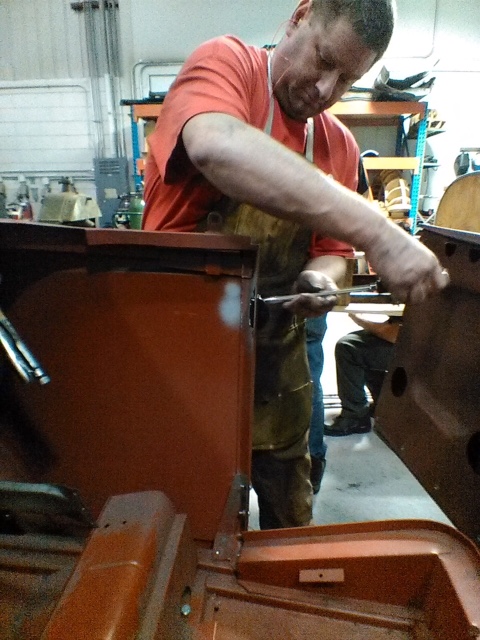Sold! A first-timer’s take on a classic car auction
On Dec. 6, 2014, Mecum Auctions invited a small group of students from McPherson College’s Automotive Restoration Program to attend their Kansas City Auction and to experience first-hand the world of collector car auctions.
Although I’ve watched Mecum’s auctions for the last several years on television, this was my first time attending a collector car auction in person. And as a first-timer, I was initially a little overwhelmed by the scale of the event and pace of the auction. With “only” 750 cars auctioned over three days, Mecum’s Kansas City auction is considerably smaller than some of their others — reaching nearly 3,000 cars in some cases — but it’s still a highly complex, finely orchestrated event from start to finish.
I noticed that the flow of the auction is fast-paced, with nonstop movement on stage and behind the scenes. The professionalism and energy of Mecum’s team members produces an environment that motivates sellers and encourages buyers. While the action on the block draws the most attention, the schedule for preparing and pre-staging vehicles makes it all possible. In order to meet the aggressive time schedule, each vehicle is assigned a time slot prior to the auction. As the auction progresses, each of those vehicles is assigned a driver and, on cue, moved into position to meet its time on the auction block. The result is a constant movement of antique and collector cars that is amazing to watch and produces an unending symphony of engine noise.
One piece I was most impressed with was the complexity of the on-air television broadcast operation. Being a retired military officer, the orchestration of the broadcast reminded me of the military operations centers I’ve worked with while deployed to combat theaters of operation. The broadcast is choreographed from within a trailer packed with communications equipment, producers, directors and staff — continually monitoring all aspects of the auction on video displays and assembling the wide-ranging array of video feeds into a seamless broadcast. While the scheduling of auction lots is highly scripted and precisely controlled, commentary by on-air personalities is unscripted and live. Their knowledge of the variety of cars offered, ranging from early 1900s antiques through late-model muscle cars, is based on limited information provided by the consigners and personal experience, but appears never-ending in volume and detail.
In addition to Mecum’s staff, we had the opportunity to meet with some of the consigners and restorers waiting for their cars to cross the auction block. What struck me the most was their willingness to take time from their preparation for the auction to talk with a group of students. Next was the quality of work they had completed. The restorers we talked with had restored cars specifically to sell at auction, and the restorations were completed to a highly detailed and beautiful level of work. Many of these cars were restored by people in their spare time, but were as well done as those completed by professional shops.
This look into the world of collector car auctions opened my eyes to additional opportunities for restoration professionals. From contracting and organizing auction lots, to consulting services, to consigners and buyers, to broadcast technical advisors — people with the historical knowledge and skills inherent to restorers are a perfect fit. The pace, complexity and energy of the auction as seen in person was beyond anything I had imagined. Mecum’s team that makes it happen is nothing short of amazing and makes the entire process look easy. As the first of many auctions I will attend, the insight gained from this opportunity will serve me well in the future.


